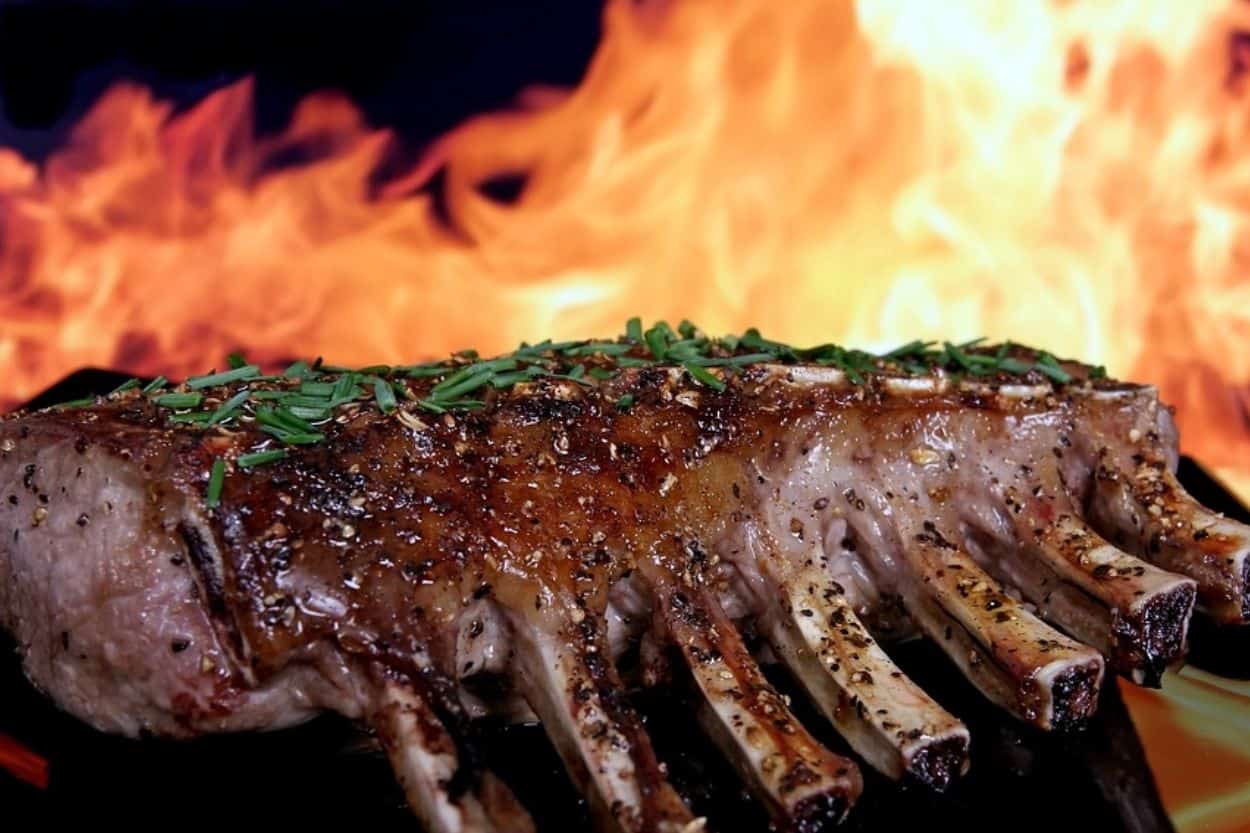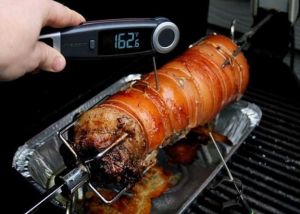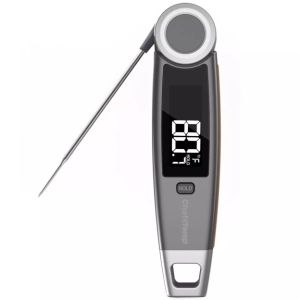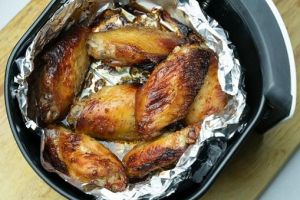
Temperature Danger Zone: Why Is It Important?
There are only a few things you can control when it comes to food safety. Keeping your food in the right temperature and out of the “danger zone” is one of them.
This article will shed light on what exactly is a temperature danger zone, why it’s important to keep your food out of it and how to properly cook, store and reheat your food to ensure it is safe and healthy to eat.
Table of Contents
What is the temperature danger zone?
The temperature danger zone is a range of temperatures where it’s unsafe for food to stay at for so long since it represents an ideal environment for bacterial growth. As per the USDA and ServSafe, this range of temperatures is between 40°F (4.4°C) and 140°F (60°C).
The food in that temperature range, in as little as 20 min, becomes the perfect environment for bacteria, such as Salmonella and E-coli, to grow and multiply to such dangerous levels that the food becomes poisonous to anyone eating it or even touching it.

Temperatures below 40°F (4.4°C) and above 140°F (60°C) are the safest for food to stay at. This means that food should be cooked and reheated to over 140℉ (60℃), chilled at or below 40°F (4.4°C), and stored in the freezer at or below 0°F (-17°C).
Why is the temperature danger zone important?
The danger zone is very important, because knowing what it is will help you identify whether a certain food item is safe to eat or not, before it starts showing signs of bacterial infection.
In most cases, even if you leave food at room temperature for a few hours or even a day or more, it wouldn’t show any signs of spoilage.
The food would still look and smell normal. But if you were to put it under the microscope, you’d find out that the bacteria have already settled in.
How to measure your food temp?

When cooking or reheating your foods, it is important to accurately measure its temperature to make sure it doesn’t fall in the danger zone temperature range.
Using a probe digital food thermometer is the safest and most accurate way to do that. A probe thermometer comes with a metal stem. When it’s inserted into the food, it gives an accurate measure of the food’s temp.
When cooking meat, poultry, and seafood, insert the instant read thermometer into the thickest part of the meat, ensuring it doesn’t hit any bones.
For other types of food, you need to guide the probe thermometer’s metal stem into the center of the dish and away from the heat source. You don’t want the metal stem to hit the bottom of the pan. Doing that, the probe thermometer will give you flawed readings.
If the food you’re cooking or reheating is too little that the kitchen thermometer’s tip touches the bottom of the pan, you can tilt the pan slightly until the food is on one side of the pan before you slide the probe thermometer into the middle of the food.
How to keep food out of the temperature danger zone?
To keep food out of the danger zone, follow these 4 safety tips:
1. The four hour rule
The safest time for food to stay in the danger zone is between 2 to 4 hours, and sometimes even less, when it is hot outside.
In that four hour window, you need to do one of the following things with your food:
- Up to two hours: Any ready-to-eat food that remains in the temperature danger zone for up to two hours should be consumed immediately.
- Between two to four hours: In this range, you should store your food immediately in the fridge or put it back on the fire and reheat it at 140°F (60°C). Leave it there until you are ready to consume it and make sure it doesn’t burn.
- More than four hours: Any food left in the temperature danger zonefor more than four hours is not safe to eat and should be thrown away.
2. Defrost the right way
Frozen foods, unless specified by the manufacturer, shouldn’t be cooked straight out of the freezer. Follow these two tips to defrost your food properly:
- Instead of leaving frozen food at room temperature to defrost, you should put it in the fridge and leave it there to defrost slowly. This will ensure it doesn’t slide into the temperature danger zonebefore you cook it or reheat it.
- Any defrosted food item shouldn’t be put back in the freezer. You should consume it within 24 hours or throw it away.
3. Cook, store and reheat properly
The way you cook, store and reheat your food is key to keeping it out of the danger zone. Here is how to do the three the safe way:
Cooking:
- Time and temp on fire: In general, to make sure your food is out of the temp danger zone, it is recommended that you cook it at 140°F (60°C) for 45 minutes, or at 158°F (70°C) for six minutes, or at 176°F (80°C) for 6 seconds.
- Correct Internal Temp: With perishable foods, especially chicken, meat and seafood, they should be cooked to a safe internal temp before they become safe to eat. For chicken, make sure you always cook it to an internal temp of 164°F (73°C). For seafood and meat, they should be cooked to an internal temperature of 145°F (62℃).
Storing:
When storing food, to make sure you do it the right away and avoid getting exposed to food bacteria, here is how to do it:
- Don’t place your food in the fridge when it’s still hot and steaming. Instead, you should always bring its temperature down first. And you should do it quickly to prevent it from staying in the temperature danger for so long. Below are two ways to help you bring your food’s temp down fast.
- Divide your food into small containers.
- If you can’t put the food in a pot. Fill up the sink with cold water. Add ice cubes, too. Place the pot in the middle of the sink and make sure you change the water around it and add more ice cubes until the food is cold and out of the danger zone.
- Storing food at safe temperatures is crucial. Always monitor your fridge and freezer temperature. Make sure your fridge temperature stays at 40°F (4°C) or below and your freezer’s at 0°F (-17°C) or below.
…

- Make room for the air to properly circulate in the fridge by removing food items you plan to consume, or items that are not temperature sensitive.
- Store your food in containers, glass or plastic, it doesn’t matter, as long as they come with seals. Make sure they are sealed and placed in the fridge properly, to avoid any leaks.
Reheating:
- Always thoroughly reheat your food to an internal temperature of around 165℉(73℃) or until it is hot and steaming.
- Don’t reheat your food more than once. If you don’t plan on eating it right and you’ve already heated it, place it in an insulated food thermos.
4. Avoid cross contamination
The final and most important thing to keep note of to keep your food out of the danger zone is to avoid cross contamination. Cross contamination is when harmful bacteria are transferred from and to one person or a thing to another.
When you are done cooking or reheating your food, make sure you clean all the kitchen utensils involved in the process. You also want to clean and sanitize your countertop. Once you finish, clean your hands thoroughly and dry them with a clean towel.
Final words
The safety tips outlined above are key to keep you and your family safe. Follow them to make sure your food doesn’t get into the temperature danger zone and put you and your family in danger.
2 Comments
Comments are closed.
Discover Other ChefsTemp Products
Discover more recipes and learn kitchen tricks by joining our cooking family on Facebook.
You may also like:
















[…] range, bacteria growth rapidly takes place. Therefore, the food needs to be kept out of this temperature danger zone to ensure that it is safe to eat. The number of bacteria in food could double in just 20 […]
[…] that you know about the temperature danger zone, you should follow the safety procedures when reheating food by monitoring food temperature. If you […]